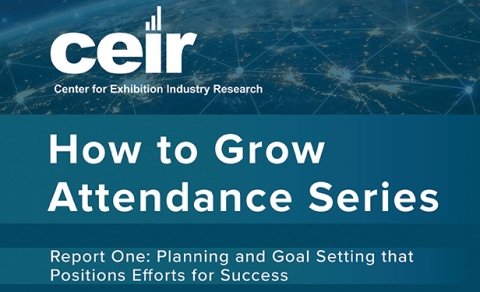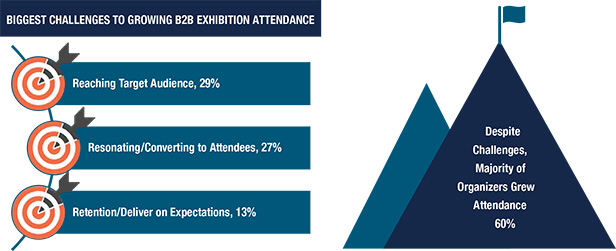CEIR Releases First Report in New Attendee Marketing Series

The Center for Exhibition Industry Research (CEIR) has released the first study in its newest research report series for event attendee marketers, “How to Grow Attendance.”
Focused on planning and goal setting to help position an attendee marketing campaign for success, Report One: Planning and Goal Setting that Positions Efforts for Success provides benchmarks for all phases of a marketing campaign, documents the most popular attendee marketing approaches used by show organizers and pinpoints characteristics where attendee growth is achieved.
According to Cathy Breden, CEO of CEIR, the “How to Grow Attendance” series is designed to offer a lifeline to attendee marketers who may feel overwhelmed by the fast-changing marketing environment.
“This research offers a roadmap of the most popular marketing approaches and, most importantly, which characteristics are tied to success in growing attendance,” Breden said. “Attendee marketing teams can use these tools to evaluate what they are doing and develop ways to enhance the outcome of their efforts.”

Key findings from the 18-page report reveal that the differences in approach between organizers who achieve attendee growth and those who don’t are nuanced and that those who are successful focus on achieving goals and metrics defined at the outset of a marketing campaign.
The study also shows that the use of analytics for new attendee acquisition is evident at a higher rate among those shows that grew attendance than among those that experienced attendance decline. In addition, the report summarizes success rates and other unique characteristics tied to attendee growth.
Part One: Planning and Goal Setting that Positions Efforts for Success inventories the following:
- Biggest challenges encountered in striving to grow attendance
- Breakout characteristics among those that grew attendance
- Planning process for defining a marketing campaign
- Which departments are involved
- Factors considered
- Goals set and used to evaluate the outcome of a campaign
- Metrics set and used to evaluate the outcome of a campaign
- Use of data analytics to help define a marketing campaign
- Use of dashboards to monitor a campaign while in progress
In addition to total results, the report identifies unique differences by event size and type of B2B exhibition organizer, association versus independent.
Additional reports in the 2018 “How to Grow Attendance” series to be released in the coming months include:
- Part Two: Marketing Channel Mix and Other Tactics that Drive Growth
- Part Three: Messaging that Resonates and Delivers
- Part Four: Plans on Where to Improve Approach in Near-term Future
To download Part One: Planning and Goal Setting that Positions Efforts for Success, go HERE.


Add new comment